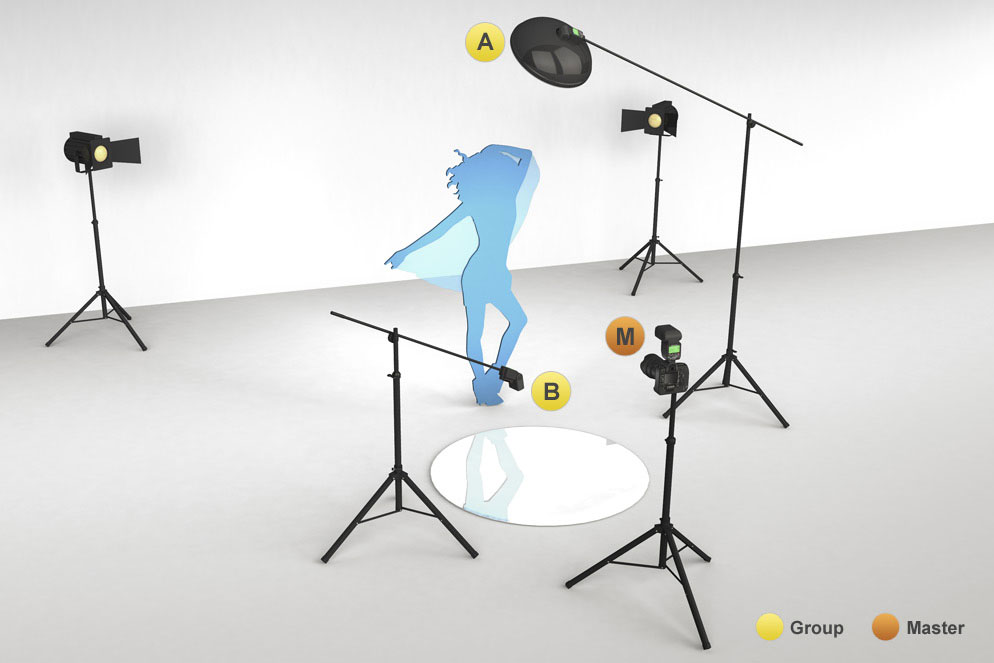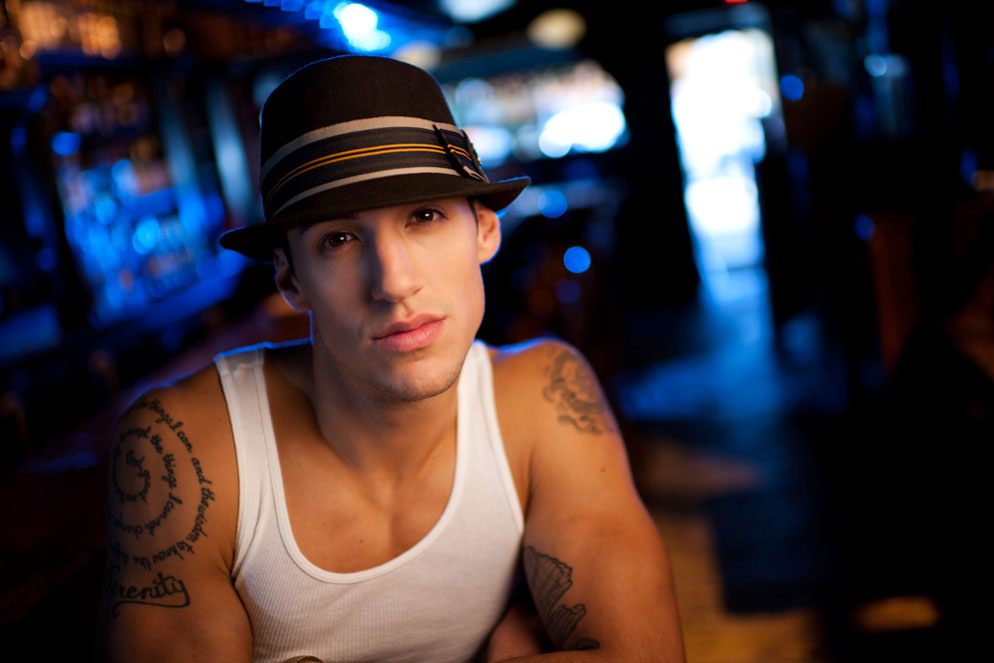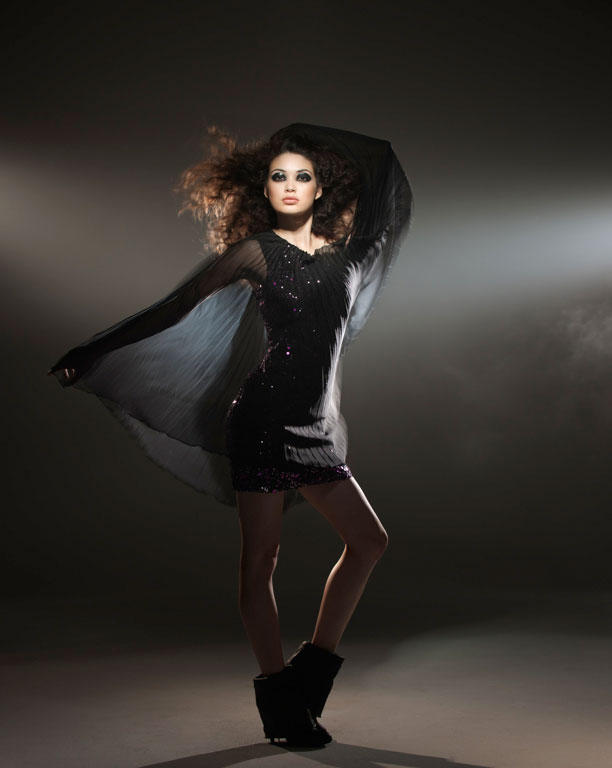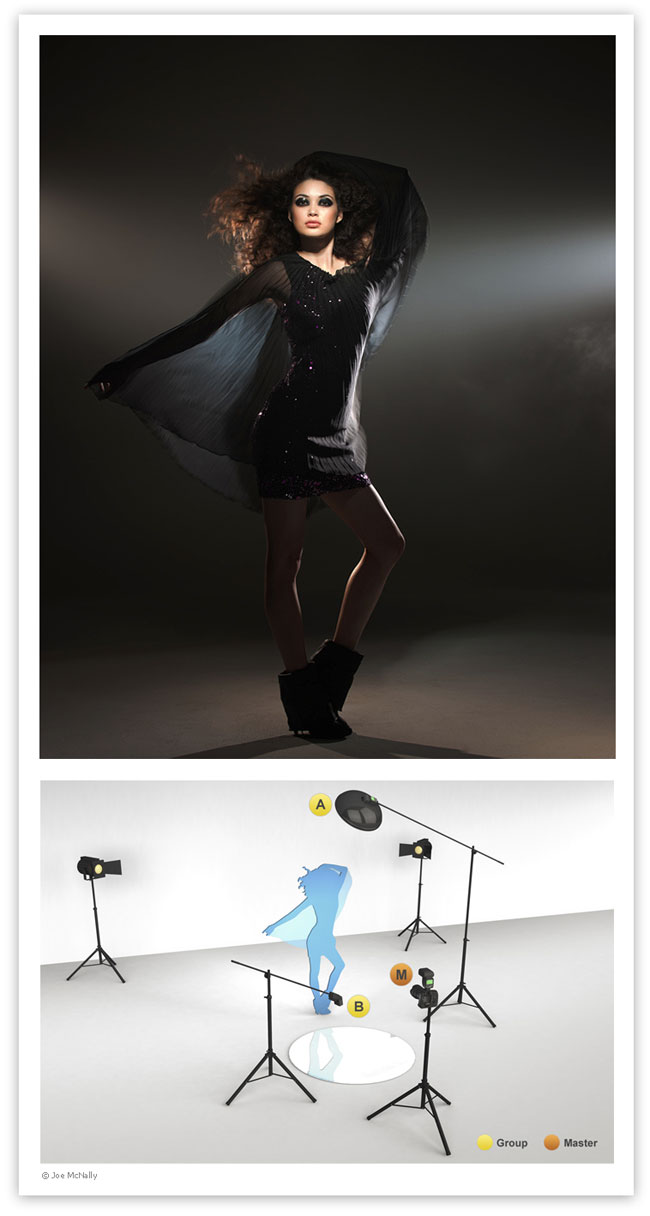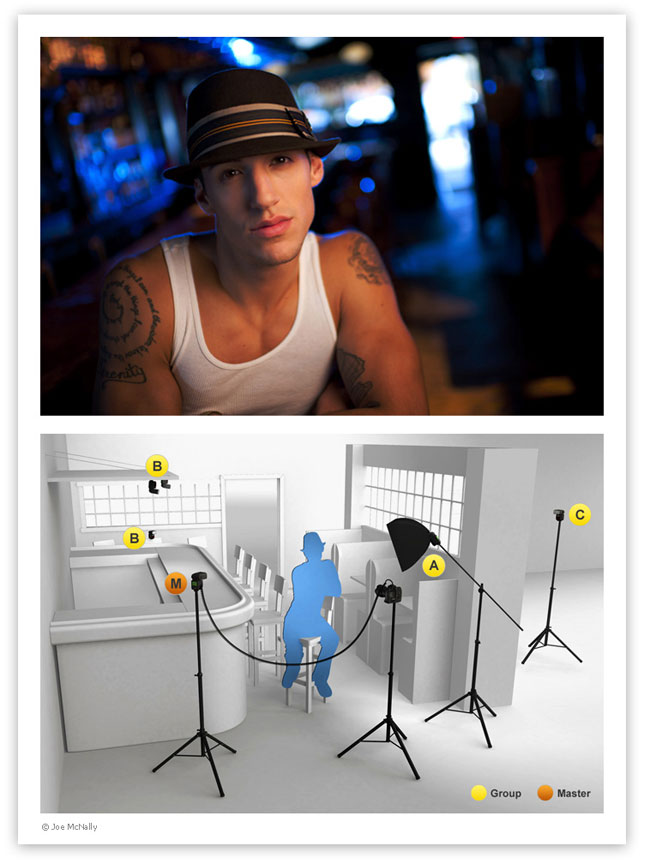Joe McNally and the new SB-910 AF Speedlight
Joe McNally is renowned for his lighting style, and an expert in utilizing portable Nikon Speedlights to illuminate subjects—whether it's a simple portrait with only a single Speedlight or a complex shoot with dozens of Speedlights filling a studio set with light. Being so familiar with the line of Nikon Speedlights, Joe was the ideal choice of photographer to put the new SB-910 AF Speedlight through its paces for images that were needed to illustrate the capabilities of the replacement for the SB-900.
To get the most out of the shoots, Joe set up both indoors and outside shoots; with the lighting set-ups going from simple to more elaborate—all to showcase the feature packed new SB-910 flash. We’re bringing you two of the final images along with lighting diagrams explaining the exact positioning of each Speedlight and light modifier.
Improvements
If anyone could create shooting scenarios designed to best illustrate the Speedlights’ feature set while trying to push the Speedlights to their breaking point, it would be Joe.
One of the tweaks that Nikon engineers made to the SB-910 over the previous model is the SB-910’s improved heat management.
Once he started shooting with the SB-910 Speedlights, Joe soon found them to have “a substantial improvement in the area of overheating.” The SB-900’s Thermal Cut-out feature was designed as a failsafe—it would shut the Speedlight down if it sensed a strong heat build up—thus preventing any damage to the flash tube. This typically occurred when flashes were fired in rapid succession or if too many high-powered flashes were taken in a short time frame. Pushing the SB-910 flashes at full power didn’t cause a work stoppage as the previous model would have been for him. “I pushed them into a zone where the SB-900 would have complained—loudly,” he said.
Also new—and used extensively during the shoots—were the new clip-on gel holders. The SZ-2TN Incandescent Filter (amber) and SZ-2FL Fluorescent Filter (green) are color correction filters for tungsten and fluorescent lighting situations respectively, that snap onto the flash head of the Speedlight for added convenience.
Other differences between the SB-900 and SB-910 include a dedicated menu button and a larger On/Off/Remote/Master switch.
In the Studio
One notable aspect of all three shots is that Joe—a master of wireless TTL lighting—actually used a wired TTL technique to set off the Speedlights during the exposures. The camera and one Speedlight (in the Master Commander mode) were wired via a Nikon SC-29 cord. Placement of that Speedlight is important—as it needs to be positioned on the set, in line of sight, so the other [remote] Speedlights can “see” the signal from the SB-910 that was wired to the camera.
(l. to r.) The lighting diagram for the shot of Jasmine in the studio and the final image.
The first image is also the simplest to light. With the model, Jasmine, positioned in front of a white wall, an overhead main SB-910 is zoomed to 200mm and pushed through a Flashpoint beauty dish that is fitted with a tight grid spot maxed out on manual 1/1, full power. This “Group A” is illuminating the model’s face.
A silver reflector sheet placed on the floor in front of the model, “Group B” is an SB-910 pointing down to bounce light from the reflector onto the model, is set on manual, 1/16th power.
That’s it for the flashes. Additional illumination on the set comes from two constant light sources behind the model, near the wall and pointing inwards. A Hazer smoke machine is placed on the left side of the set to add to the mood of the shot; and a wind machine is placed on the right side of the set.
“At 1/60th of a sec. at f/5.6, the ends of model Jasmine’s hair take off in the wind, just a touch, and the hot spotlights from the background not only provide rim light for her, but they also take on a bit of shape in the smokiness,” explains Joe. “Anytime you want light to show shape, it basically has to hit some sort of particulate matter in the air [read: smoke].”
While the backlighting is dramatic, the frontal lighting—a main and fill—are provided by a simple SB-910 each.
(l. to r.) The lighting diagram for the shot of Jake in the bar, and the final image.
The second image started simply enough. Joe placed the model, Jake at the bar and then lit around him. “Your subject is the center of gravity in the picture,” says Joe. “All your efforts to light the image revolve around what’s necessary to show the reader his—the subject’s—world.”
The main light “Group A” was placed just to the right of the camera, in a 24-inch Ezybox Hotshoe softbox with a white interior; and a TriFlip warm reflector at waist height in front of Jake for fill.
With the subject lit, Joe set out next to light the environment. “Locations have power. They complement and set the stage for the subject,” Joe explains.
“Group B” units were placed behind the bar, and clamped among the racks of wine bottles and glasses, Joe placed two SB-910 units with their Dome diffusers on. They were positioned so that they bounced up into the ceiling. In addition to the tungsten clip-on plastic gel holders that came with the SB-910 Speedlights, Joe added a regular CTO (color temperature orange) gel to each, behind the clip-on—for mood. Joe explains: “My camera was set to incandescent white balance. I made this move mostly because I wanted any highlights traveling through the doors and windows from the street to be cool and bluish. I thought that blue look would work well, and vibrate with the warm tones of this ancient, wooden pub.”
“Given that white balance setting, just one gel would not do. The light would simply be “normal” for incandescent. Neutral, in other words, and not golden warm like I wanted. Hence, the double gel. Two full cuts of CTO pulled the bar behind him back into a pleasing warm tone.”
“I still wanted to amp up the blue feel, but locally, in an isolated way. Blue tones from the sidewalk daylight were faintly reading into the exposure, but not dramatically so. My answer here was to take another SB-910, gel this one blue, and clamp it to a barstool, firing right into the back of my subject.” It is this light, also “Group B” that provided blue highlights coming off the wood above the bar and the model.
As Joe says, “It looked, well, cool. Even more so because of the blue gel. It was already cool in appearance because it had no warming gel on it, and the naked Speedlight, balanced for daylight, fired into an incandescent white balance environment is already going to read bluish. My placement of the blue gel just amps up the cool factor.”
Lastly, Joe added a warm-toned light (again with two gels), in the adjoining room (to camera right). Fired through the interior window separating the two areas of the bar, this “Group C” SB-910 was zoomed to about 35mm, with no diffuser. “It sprays across the floor on camera right, and gives me detail and separation down there in what would have been a very dark area of the picture,” explains Joe.
To trigger the Speedlights in TTL with a commander, Joe needed to place that commander in a remote position from the camera angle, using a couple of SC-29 cords linked together. Placed off to camera left, all of the other Speedlights in the two rooms were able to see the Master Commander unit.
Joe McNally is a Nikon Ambassador.
Learn more about him on his ambassador page.

